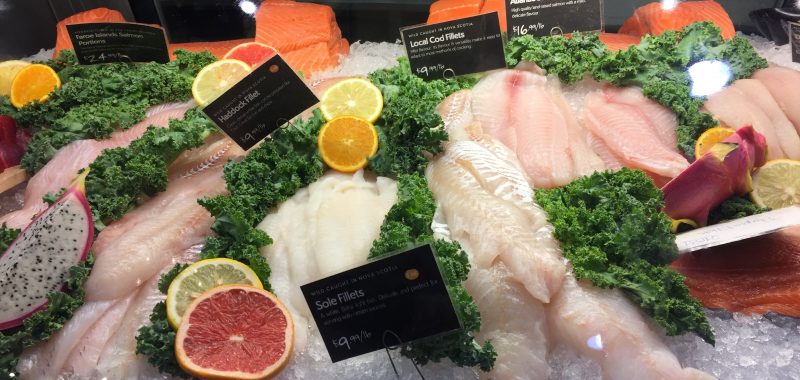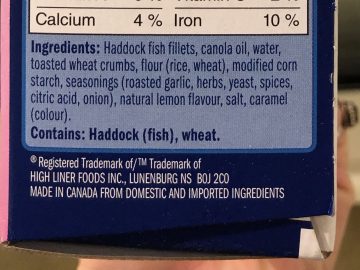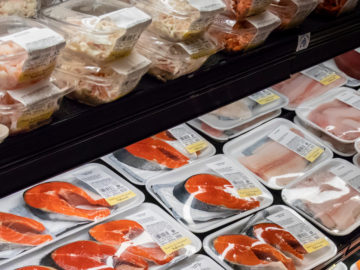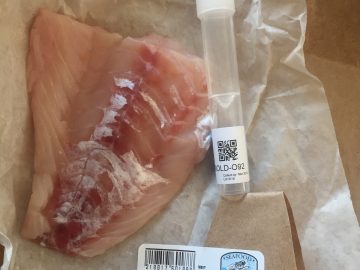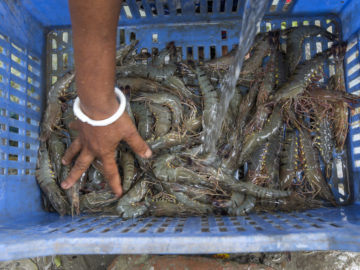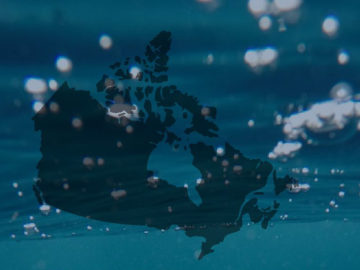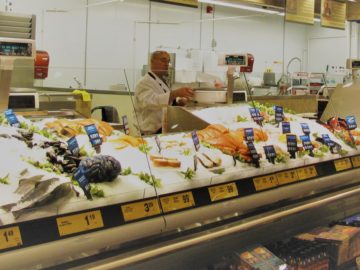The Canadian Food Inspection Agency has missed the mark on their proposed regulations to modernize seafood labelling. We have one last chance to push for robust seafood labelling laws.
Over the past six years the Canadian Food Inspection Agency (CFIA) has worked on a Food Labelling Modernization initiative with the goal to “develop a more modern food labelling system that responds to current and future challenges.” SeaChoice has been involved in this process by advocating for best practice seafood labelling – best practice labels include three key elements 1) scientific name, 2) geographic origin (where the seafood was farmed or fished), and 3) method of farming or fishing
Unfortunately CFIA’s proposed regulations fail to meet current best practices and offer no improvements for consumers to Canada’s opaque approach to seafood labelling. The proposed changes still only require companies to indicate the common name of any seafood product, and if imported, ‘the place of last major transformation’ of the product, for example, where the seafood was canned or filleted (also called “country of origin”). The proposed regulations do little to inform buyers about potential health implications, environmental or social sustainability, quality assurance, or even truthful naming of the products. It further obstructs Canadians from supporting local Canadian fisheries and seafood products.
While we have advocated for the introduction of several elements for best practice during this labelling modernization work of CFIA, for this last consultation opportunity. SeaChoice is focusing on the need for labels to specify the species scientific name and geographic origin.
Scientific name is critical on a label because Canada’s current seafood labelling regulations allow for many different species with variety of health and safety, environmental and social concerns to be vaguely labelled. Also including the species scientific name on a label can reduce confusion when one species may have a variety of common names based on language, culture, or region. For example, “shrimp” is an acceptable common name for 41 different shrimp species and “sardine” is used as a common name for Atlantic herring which is an entirely different species.
The geographic origin of a seafood product is also critical. Consumers often interpret country of origin that is listed on the package to be the geographic origin – where the food was caught or farmed. However, seafood is often caught or harvested in one country/region then processed in another, such that the geographic origin is not the country of origin indicated on a label. For example, an Atlantic Halibut caught in the Gulf of St. Lawrence by a Canadian fishing vessel may be exported to China for processing into fillets, then re-imported into Canada with a label that says “Product of China”. For more examples of why country of origin labelling is confusing, check out our other post here.
Overall, CFIA’s modernization effort tries to streamline labelling standards for all food products at the expense of improving transparency for seafood. SeaChoice has reiterated our position to CFIA with respect to species name and geographic origin on seafood labels. In addition to these central concerns, we oppose other proposed changes that have weakened the previous regulations. For example, lake whitefish, the only species category that historically has benefitted from strong labelling requirements including lake and province of origin is having these requirements repealed. Furthermore, CFIA is seeking feedback on changing the term used to present country of origin on a label from “Product of” to “Imported from” or “From”. SeaChoice does not support this change as consumers will remain in the dark on whether their seafood was caught, harvested or processed in the country indicated on the label.
SeaChoice wants Canada’s seafood-labelling laws brought into the 21st century so they reflect what Canadians are looking for, meet or exceed standards enjoyed by other countries and are consistent with issues the CFIA has itself identified. If you agree then please consider making your own submission to the consultation process. The CFIA is seeking feedback on the draft regulations. Please send an email now to voice your concerns https://davidsuzuki.org/action/seafood-labelling/
